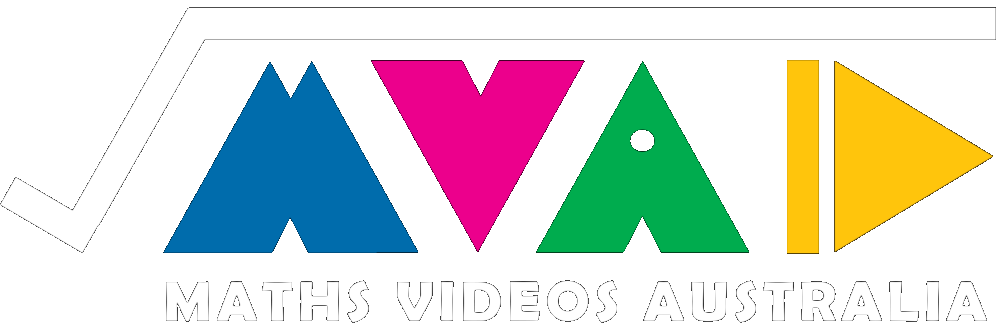Unit 1 & 2
Mathematical Methods (Victoria)
Functions & Graphs
-

Finding Midpoints on a cartesian plane
-

Finding a point given a point and a midpoint
-

The distance formula
-

Parallel lines and their gradients
-

Perpendicular lines and their gradients
-

Relations Domain and Range
-

What’s a function
-

Function notation
-

Graphing on calculator using restricted domains
-

Function Transformations intro
-

Function transformation afx
-

Function transformation f(x+a)
-

Functions Transformation fx+a
-

Functions transformations f(ax)
-

domain and range notation
-

Anatomy of a quadratic graph
-

Solving Quadratics 3 ways
-

Review of sketching quadratics two ways
-

Modelling and problem solving with quadratics
-

solving simultaneous equations using quadratic and linear graphs
-

Direct vs inverse proportion
-

Equations of hyperbola and sketching
-

Finding equation of reciprocal function from sketch
-

Equation of a circle sketching and finding coordinates
-

Sketching a circle on a cartesian plane
-

Equation of a circle finding intersection using simultaneous equations
-

Finding a linear factor of a polynomial
Probability & Counting Methods
-

Pascal’s Triangle and Selections
-

Binomial expansion using pascal’s triangle
-

Factorials!
-

Combinations
-

The Language of Sets
-

Basic Set Theory
-

The inclusion exclusion principle for 2 and 3 sets
-

Theoretical Probability with sets
-

All Probabilities sum to 1
-

Venn Diagrams the complement
-

Experimental probability
-

simplified tree diagram
-

The Addition rule of probability
-

Probability Tables intro
-

Conditional Probability formula
-

Conditional Probability Do you watch the bachelorette
-

Conditional probability rearranging the formula
-

Conditional Probability and Tree Diagrams
-

Independent events intro and tests
-

Independent events 2
-

Addition and Multiplication principles
Exponential & Logarithmic Functions
-

Index Law 1 – multiplication of indices
-

Index Law 2 – dividing indices
-

Index Law 3 – raising to the power of zero
-

Index Law 4 – Raising a power to another power
-

Index Law 5 – worked examples using the fifth index law
-

Index Law 6 – expanding brackets around a fraction raised to a power
-

Index law 7 Negative Indices – converting Negative indices into positive indices using fractions
-

Index Laws Fractional indices
-

Index Laws Negative bases
-

Index Laws simplifying by decomposing
-

Scientific notation Converting to scientific notation
-

Scientific Notation Convert scientific notation to decimal
-

Scientific notation Multiplying and dividing
-

Exponential Functions Basic shape and Translations
-

Exponential Functions Dilations
-

Exponential functions 2 Sketching
-

Exponential functions sketching part 2
-

Exponential functions 3 Finding equation from a sketch
-

Exponential Model and Applications
-

Log laws as fast as possible
-

Logs 1 Intro to Logarithms
-

Logs 2 Log Law 1
-

Logs 3 Log Law 2
-

Logs 4 Log Law 3
-

Logs 5 Log Law 4
-

Logs 6 Log Law 5
-

Logs 7 Log Law 6
-

Logs 8 solving exponentials
-

Solving Indicial equations using logarithms
-

Logs 9 Solving logarithmic equations
-

Solving Log equations examples
-

Solving equations involving natural log
-

Solving logarithmic equations with an unknown power
-

Solving logarithmic equations with an unknown base
-

Logs 10 Solving logarithmic equations part 2
-

Logarithms 12 Simplifying Log equations
-

Logarithmic functions Basic shape
-

Logarithmic functions Sketching
-

Finding equations of log functions
-

Logarithmic functions 3 Find equation from a sketch
-

Logarithmic Functions 4 Regression analysis
-

Exponential and logarithmic modelling
-

Solving Indicial equations
-

Harder Indicial Equations
-

Indicial equations super hard quadratic action
-

Indicial equations The hardest one
Circular Functions
-

Introduction to Radians
-

Converting Radians to Degrees and Degrees to Radians
-

Radians quick angles
-

Standard triangles
-

The Unit Circle
-

The Unit Circle The Tan Ratio
-

The Unit Circle and Symmetry
-

The unit circle CAST and why CAST works
-

Finding exact trig ratios involving negative angles
-

Finding exact values of trig ratios around the unit circle
-

The Unit Circle Finding exact values of negative trig ratios
-

The unit circle Boundary angles
-

The unit circle solving unknown angles
-

Solving Simple Trig Equations Worksheet (worksheet in Description)
-

The unit circle solving unknowns in trig equations
-

Pythagorean identity
-

Pythagorean identity rearrangement
-

Using Pythagorean Identities Part 1
-

Solving trig identity equations using quadratics
-

Solving trig identity equations using quadratics part 2
-

Sketching SinX and CosX
-

Sketching y = AsinX and AcosX
-

Sketching y = AsinX +D and AcosX + D
-

Sketching y = AsinBx + D or y = AcosBx +D
-

Sketching y = AsinB(x+C)+D
-

Finding the equation of a periodic function from a graph or sketch
-

Revision of radians and the unit circle
-

Solving and simplifying using trig identities
-

Solving Trig equations The Tricky 3 Quantum of Quadratics
-

Solving Trig equations The Tricky 3 Square or Die
-

Solving Trig equations The Tricky 3 Domain Domination
Differentiation & Antidifferentiation of Polynomials
-

Variable and constant rates of change
-

Average rates of change
-

Intro to instantaneous rates of change
-

The Gradient function
-

Differentiation from first principles
-

Differentiating polynomials by rule
-

Finding Stationary points
-

Nature of Stationary points
-

Finding the equation of a tangent
-

Finding the equation of a normal
-

Equations of tangents and normals revisited
-

Introduction to Kinematics
-

Optimisation when the function is unknown
-

Motion in a straight line An application of rates
-

Motion in a straight line acceleration recap
-

Rates of change application
-

Intro to Integration and integrating polynomials
-

Integration a little bit of theory
-

Integration finding the c value
















































































































































